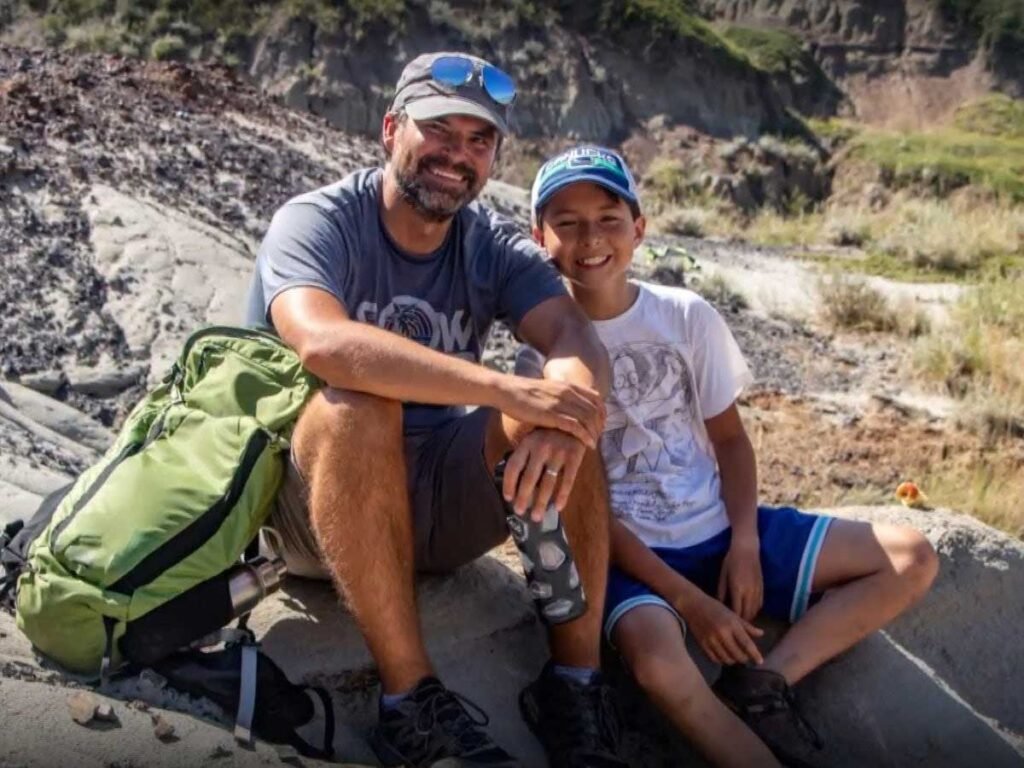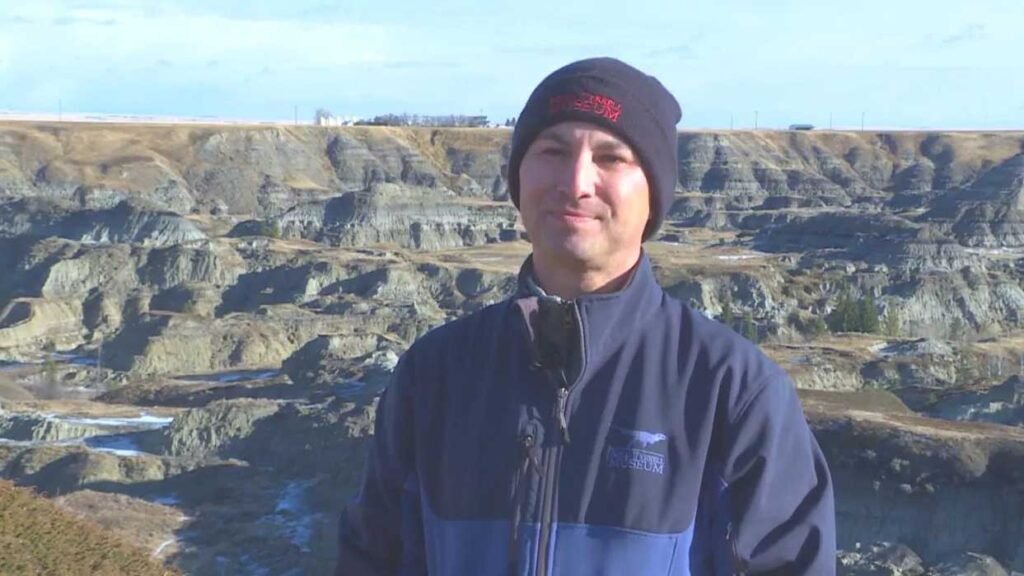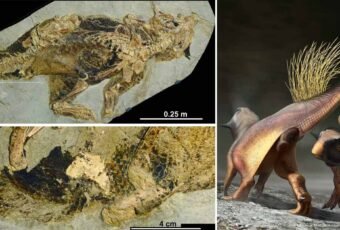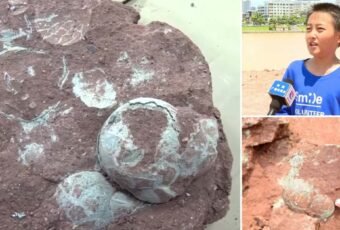“For me it’s just amazing because I’ve been aspiring to be a paleontologist for six or seven years, I am fascinated about how bones from creatures that lived ten million years ago become these fossil rocks,” said the 12-year-old after the discovery.

Not many kids dream of being a dinosaur expert when they grow up, but one kid, in particular, got a glimpse of what his dream job would look like after he discovered the bones of a 69 million-year-old dinosaur.
Nathan Hrushkin, a 12-year-old boy was hiking in Alberta, Canada, with his father when he came across something remarkable. The 12-year-old boy alerted his father after he noticed what looked like a giant fossil protruding out of the ground.

“The first thing I said was, ‘Dad, you need to get up here,'” recalled Nathan, “My dad said that he could tell by the tone in my voice that I had found something really good.”
The Father-son duo suspected that they had found something significant but were still unsure, so they sent a photo of their findings to the Royal Tyrell Museum, who identified that the bones belonged to a young hadrosaur, commonly known as a duck-billed dinosaur.
As fossils reports from the Horseshoe Canyon are very rare, the Royal Tyrell Museum sent a team to the conservation site, where the discovery was made to inspect the specimen up close. The area is a part of the Nodwell property under the Nature Conservancy of Canada(NCC) which confirmed Nathan’s discovery of the fossil.

“This young hadrosaur is a very important discovery because it comes from a time interval from which we know very little about what kind of dinosaurs or animals lived in Alberta. Nathan and Dion’s help will fill this big gap in our knowledge of dinosaur evolution… The discovery of this dinosaur on a conservation site demonstrates the need for land conservation.” the NCC wrote in their statement following the discovery in July 2020.
There are several species of hadrosaur, but to tell which species this young specimen belongs to will require the preservation of identifiable characteristics, such as a skull crest. From Nodewell, bones from all four limbs, hips, shoulders, and a partial skull were recovered.
Since Nathan’s find paleontologists have uncovered between 30 and 50 bones. Based on the early examinations, researchers established that all the bones collected belong to a single specimen, a juvenile hadrosaur, three to four years of age. This hadrosaur is highly significant because it will contribute to filling the knowledge gaps about dinosaurs from that time intervals.
“[The dinosaur remains are] from a layer in Albert where they don’t have a lot of fossil information,” said Nathan’s father. “So that’s why they were very excited to come and excavate it because it fills a scientific knowledge gap.”
Francois Therrien, a paleontologist at the museum, told Canadian news outlet CBC: “These animals were probably the most common in Albert in the late Cretaceous period, they were probably as common as deer were today.”

“For me it’s just amazing because I’ve been aspiring to be a paleontologist for six or seven years, I am fascinated about how bones from creatures that lived ten million years ago become these fossil rocks,” said Nathan.
Nathan and his father hope to someday view the dinosaur they helped find displayed inside a museum.
Read more from the website:










